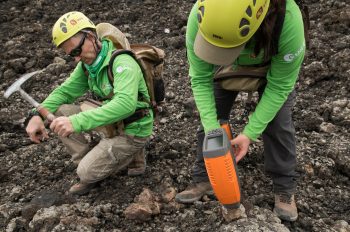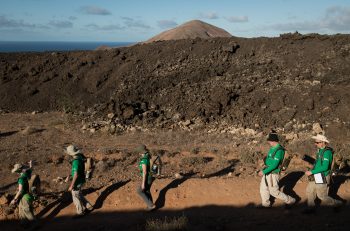Elapsed time: one year.
In 2016 we took off on this extraordinary journey through European analogue environments, to learn first-hand from the best planetary field geologists how to crawl on planetary bodies in search for the best samples to carry back home.
Here we are again, with a new edition of Pangaea, improved and enhanced, and with a list of excellent trainees, all motivated to help ESA contribute to the design of the best possible lunar planetary missions, robotic and human.
The goals of Pangaea this year have focused on understanding how to replace and enhance the senses and decisions of a field geologist with instruments, analytical and decision support tools, robotics, and operations.
Pangaea is no longer just an astronaut training course. It is becoming a tool for astronauts, mission designers, mission operations personnel and trainers to discuss fundamental concepts of mission design, by walking on terrestrial analogues side-by-side with planetary field geologists. They are learning to crawl on planetary bodies.
This year, Pangaea will extend into a follow-up test campaign: Pangaea-X. Its focus will be testing technologies, instruments, scientific protocols and operations concepts.
Pangaea-X has an ambitious set of inter-related goals, where operational concepts for geological sampling during spacewalks are compared. Analytical and mechanical instruments supporting sample collection will be tested in realistic environmental and situational conditions.
Scientific traverses into lava tubes will be the highlight of the second part of the test campaign, which will combine microbiological sampling and in-situ portable DNA sequencing of cave microbiota, remote sensing and 3D scanning of the subsurface channels and testing underground communication instruments. An advanced rover will also crawl through the harsh and hazardous terrain of the lava tube both an automated and tele-operated mode.
Astronauts, scientists, operations experts and instrumentation engineers will work side-by-side to advance European know-how of integrated human and robotics mission operations. It’s a small step, but it’ll help in our giant leap towards our rocky neighbouring bodies.
Loredana Bessone
Pangaea Project Leader




Discussion: one comment
Molto bello ed interessante. Essere informata sui progressi delle vostre spedizioni mi rende felice perché mi sento partecipe. Mille volte grazie e good look❤